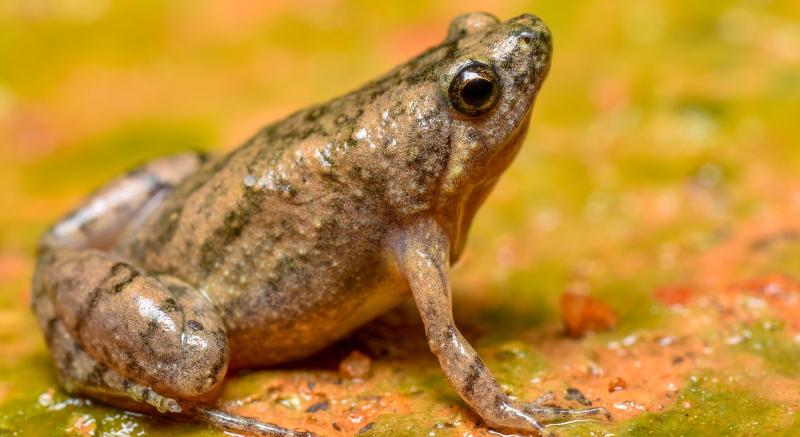
After the Microhyla laterite that was described from Manipal in 2016, scientists have found another new narrow-mouthed frog from the city centre of Mangaluru, in coastal Karnataka.
The coastal city of Mangaluru in Karnataka now has a new feather in its cap with the discovery of a new species of narrow-mouthed frog. Named after Mangaluru, called kodial in the Konkani language, Microhyla kodial was first spotted in Mangaluru. The newly discovered species is the 10th species of Microhyla from India.
A joint effort by a team comprising Vineeth Kumar K, Department of Applied Zoology, Mangalore University, Mangalagangothri, Konaje, Radhakrishna Upadhyaya K, Department of Applied Zoology, Mangalore University, Mangalagangothri, Konaje, Prof. Rajashekhar K Patil , Department of Applied Zoology, Mangalore University, Mangalagangothri, Konaje, Godwin Rodny D’Souza, St. Aloysius Pre University College, Mangalore, Anwesha Saha, Suri Sehgal Centre for Biodiversity and Conservation, Ashoka Trust for Research in Ecology and the Environment (ATREE), and Dr. N. A. Aravind Madhyastha, Suri Sehgal Centre for Biodiversity and Conservation, Ashoka Trust for Research in Ecology and the Environment (ATREE) - the discovery is published in the latest issue of International Taxonomic Journal, Zootaxa, says a release shared by ATREE. The study is supported by the Department of Science and Technology and the Royal Norwegian Embassy.
The newly described frog is characterized by the absence of a lateral body stripe, tuberculated dorsal skin surface, absence of webbing between fingers and dorsal marginal groove on finger and toe disc, and the presence of basal webbing between toes. According to the researchers, the new species discovered is also distinct in its shorter breeding season, limited to the rainy season (June to September) and the females lay up to 300 eggs per clutch.
The researchers encountered this new species while carrying out field surveys in the coastal region of western India as part of a more extensive study on community ecology of anurans (frogs and toads) in the urban landscape. The new species (unlike other described members of Microhyla), has been exclusively recorded from an urban industrial area that is surrounded by seaport, petrochemical, chemical and refinery industries. Given that this species occurs in high density, the researchers infer that it is tolerant and adapted to such disturbances. Since the industrial patch, where Microhyla kodial was spotted, used to be a depot for timber imported from Southeast Asia, the researchers suggest that the frog could have been accidentally introduced with timber that came from Malaysia, Indonesia and Myanmar.
To confirm this inference, Dr. N. A. Aravind, a senior member of the research team mentioned that they have used molecular analysis (using DNA) along with morphological and bioacoustics characteristics to ascertain the distinction of this species. Elated with the discovery, Dr. Aravind says “the new species resembles closer to the South-east Asian ones than the South Asian ones.”
Speaking to Research Matters on the recent discovery, Dr. K. S. Seshadri, an amphibian researcher and an alumnus of the National University of Singapore, remarked that this discovery highlights the possibility of missing taxa suggesting that perhaps there are more species to be discovered from India and the Western Ghats in particular. And when such species are included in the molecular analysis, they might tell a different story of biogeographical relationships.
(Based on a press release shared by ATREE and inputs from researchers.)
Additional Resources shared by the researchers:
Watch the behavioural videos of the new species by clicking on following links:
Photo and video credits: Vineeth Kumar K





